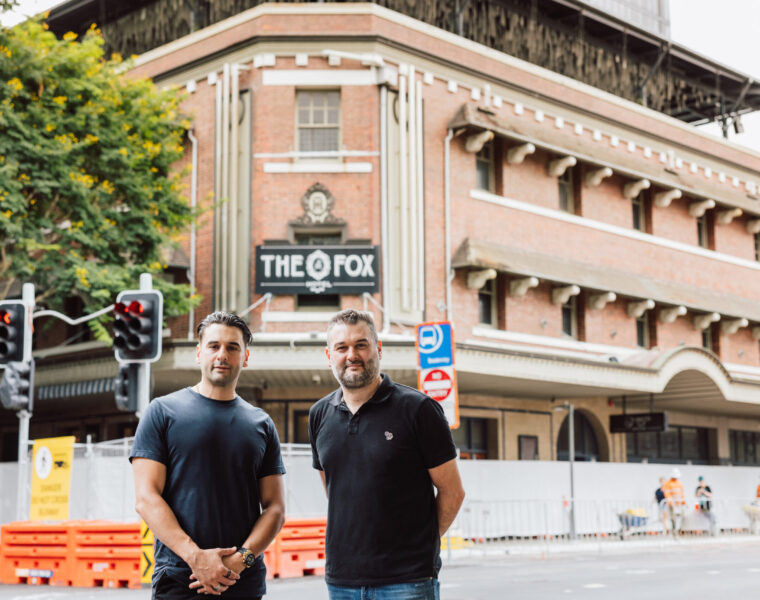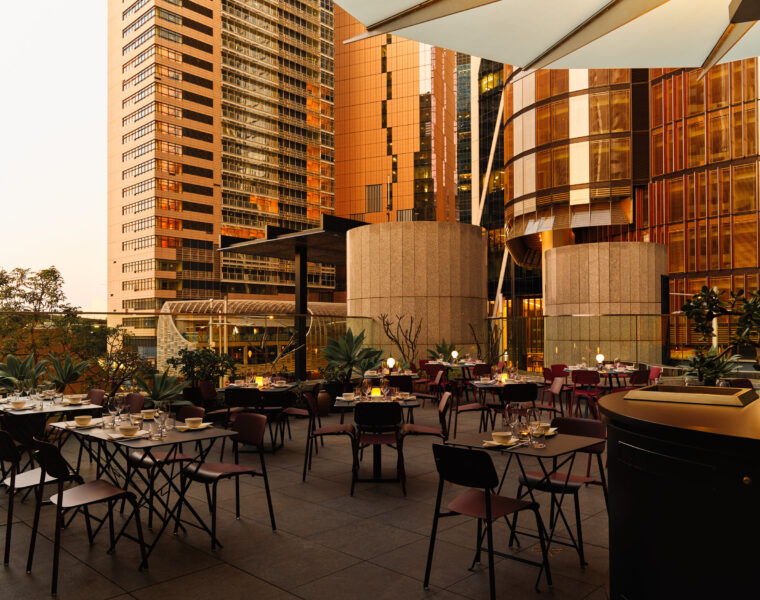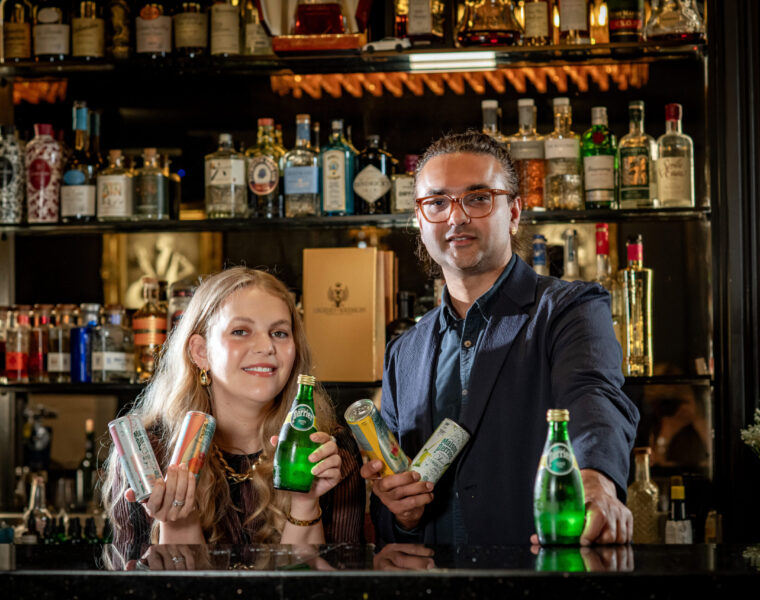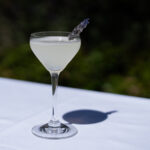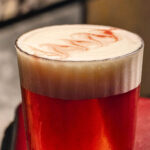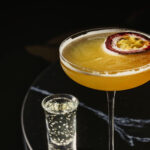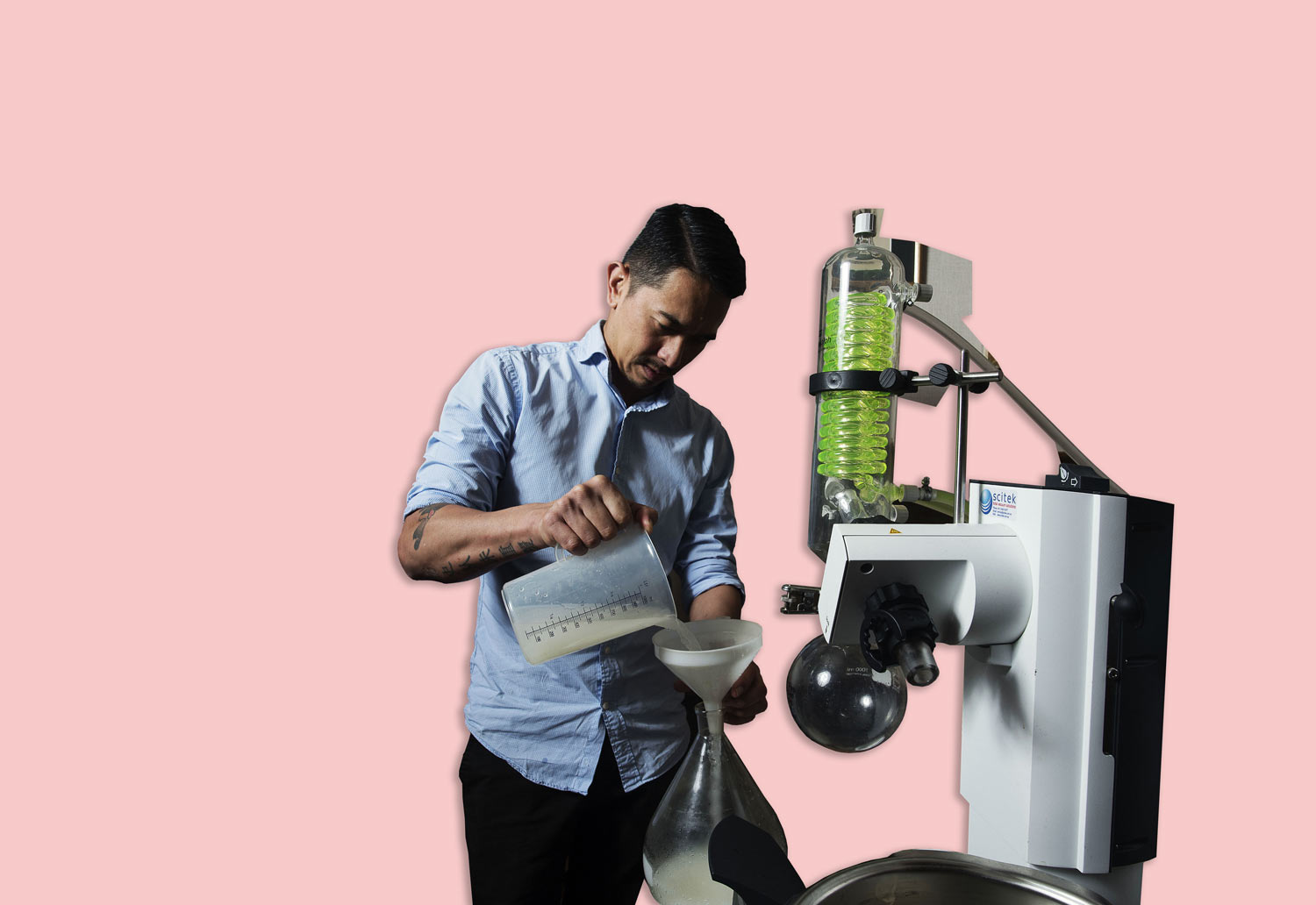
This is all made possible by their rotary evaporator, often known as a rotovap. It’s a piece of kit which allows you to capture and concentrate flavours that otherwise would not be possible.
So to rotovap drinks, simply put, a rotary evaporator extracts delicate aroma compounds without the higher heat of conventional distillation. You can use it with alcohol as the liquid, or just with water.
We’ll get into more detail on that in a minute. But first, how feasible is this for your bar? Well, a rotary evaporator set up like the one used at The Duke of Clarence is going to set you back a bit (and theirs isn’t the most expensive out there).
The rotary evaporator itself costs in the order of $8,000, and then you’ve got to spend another $3,000 or so on a chiller, and another $3,000 on a vacuum pump.
“You can get cheaper rotovaps out there,” says David Nguyen-Luu, the group’s general manager and in-house rotovapper-in-chief. “And instead of getting a proper pump or a proper chiller, what people do is use a fish tank pump. But those keep dying because they’re not powerful enough.”
So it pays to spend the money on getting the good gear, he says.
“The reason why we got all the equipment is like with using Hoshizaki ice — if you’re going to do it, it’s worth doing properly.”
The process is started by bringing the solution inside the starting flask to the same temperature as the water bath. Once that happens, the vacuum pump is switched on and the system is under pressure. The solution begins to evaporate — in this case, at 45 degrees Celsius — and the evaporation travels into the condenser chamber, where the coils chill the gases, returning them to liquid. The liquid is then collected in the receiving flask — now you’ve got some tasty pickled onion distillate to add to your next Gibson.
Why is the vacuum important? It has the effect of reducing the boiling point of liquids, by reducing the pressure in the system. We know pure alcohol evaporates at around 78 degrees Celsius, water evaporates at 100 degrees, right? Well, kind of.
2015 Bartender of the Year Lee Potter Cavanagh has explained it simply to us before, and it bears repeating here.
“We [tend to] think that evaporation is when water boils at 100 degrees Celsius, right?” said Potter Cavanagh. “It’s not that simple. It boils at 100 degrees at sea level. As you go up [in altitude], that goes down. The lower the pressure you’re at, the easier things evaporate. Because this is distilling under vacuum — that is, at a lower pressure — you can extract aromas and flavours at a lower temperature.”
So what are the sorts of things you can put through a rotovap? Well, the sky’s the limit. Yes, you can redistill alcohol, but you can also put through juices, or even flavoured waters. The good thing about using alcohol, however, is that it’s a great solvent for extracting flavour compounds from other ingredients. You can use water, but what you often end up with is a clear liquid — water — that has all the aroma compounds from the solution, but little of the taste on the palate. It’s great for making scented ice, but less so for tinctures.
Here, Nguyen-Luu steps us through the process behind their pickled onion distillate, which they use in one of the best Martini variations we’ve tasted, the Clarence House Gibson. If onions are your thing, give their spec a go.
Pickled Onion Distillate
Before you rotovap:
- Blend pickled onions with 700ml neutral spirit — vodka will do.
- Set the water bath to 45 degrees Celsius.
- The chiller for the condenser is set at 5 degrees Celsius.
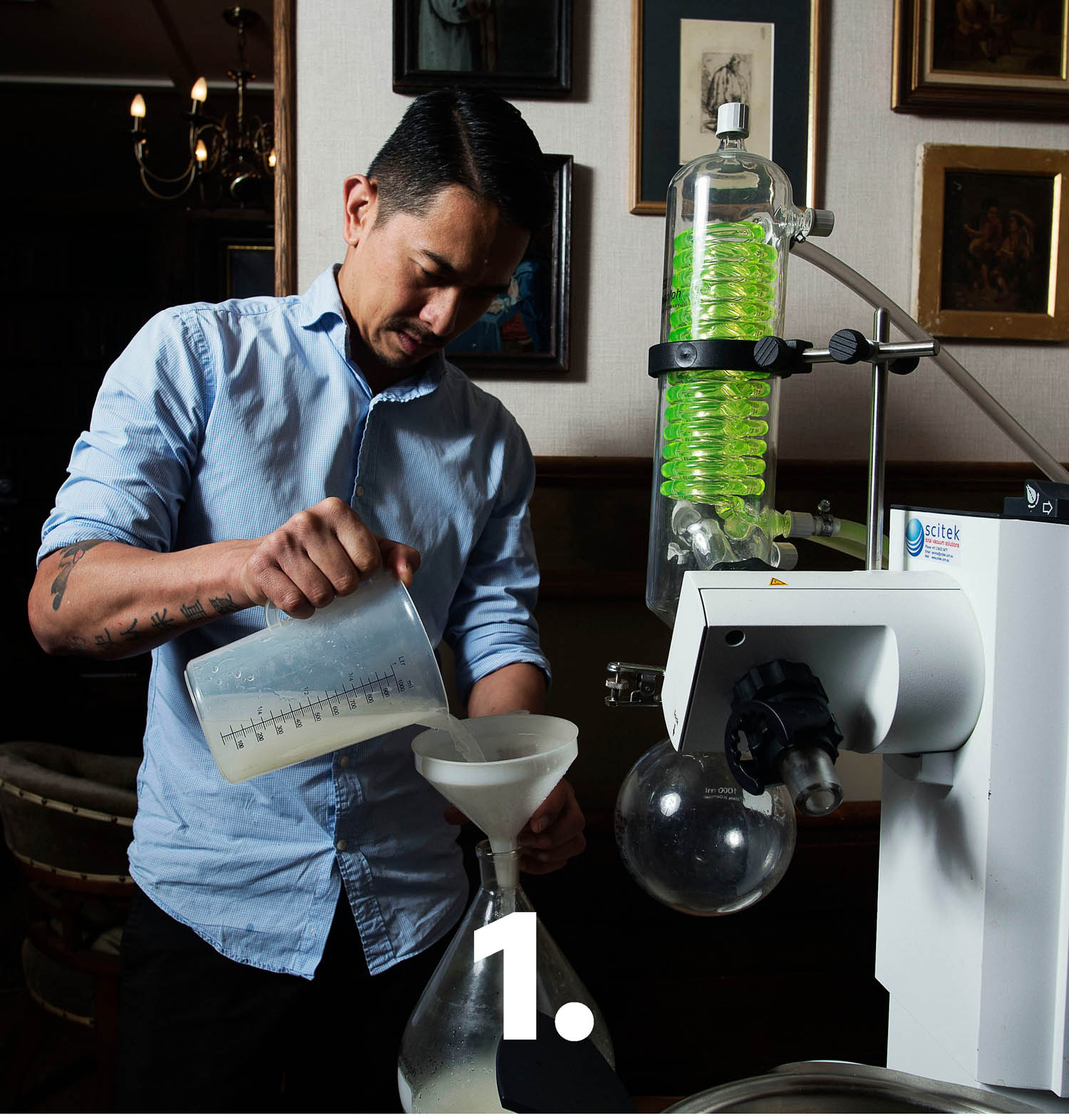
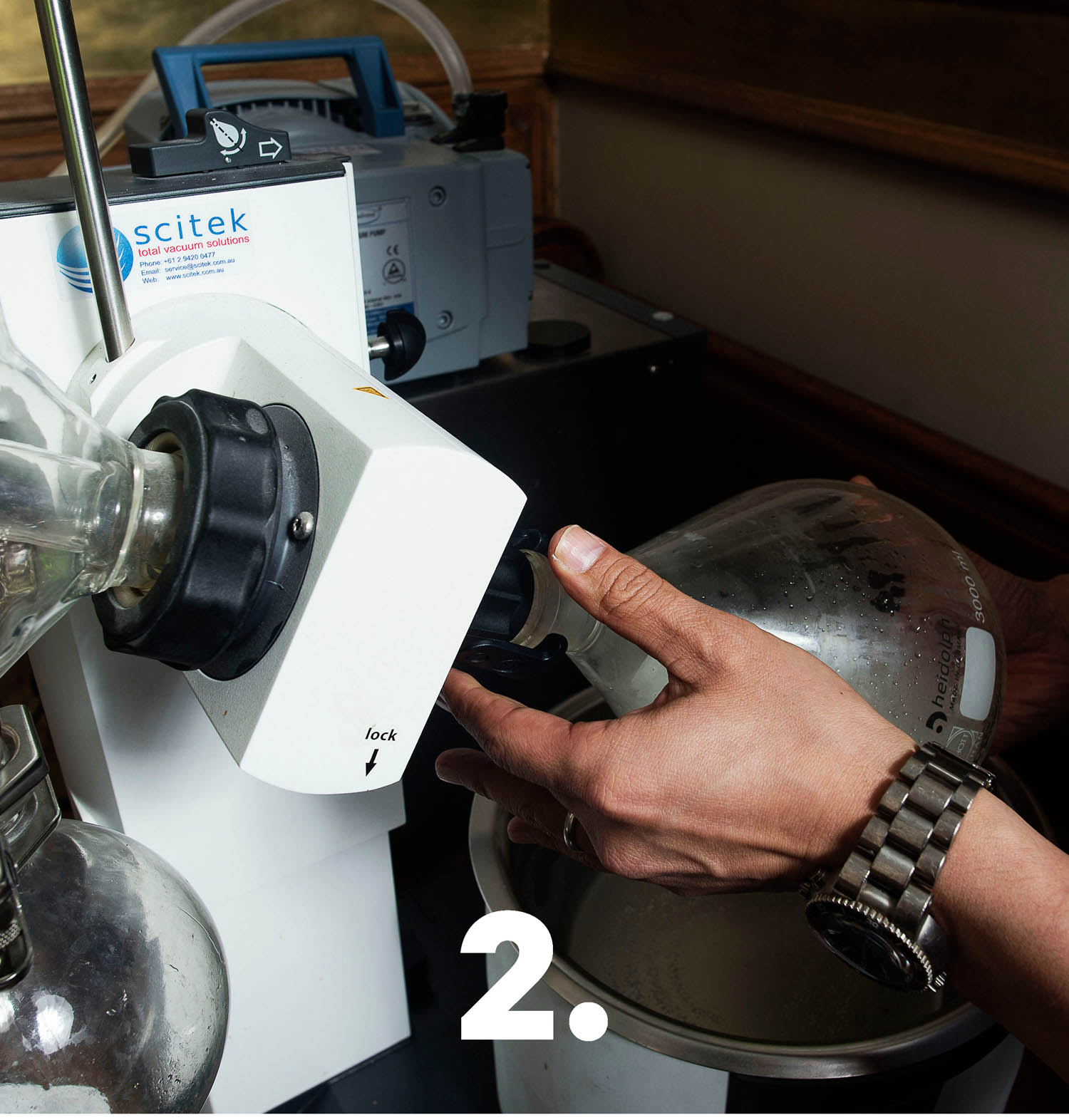
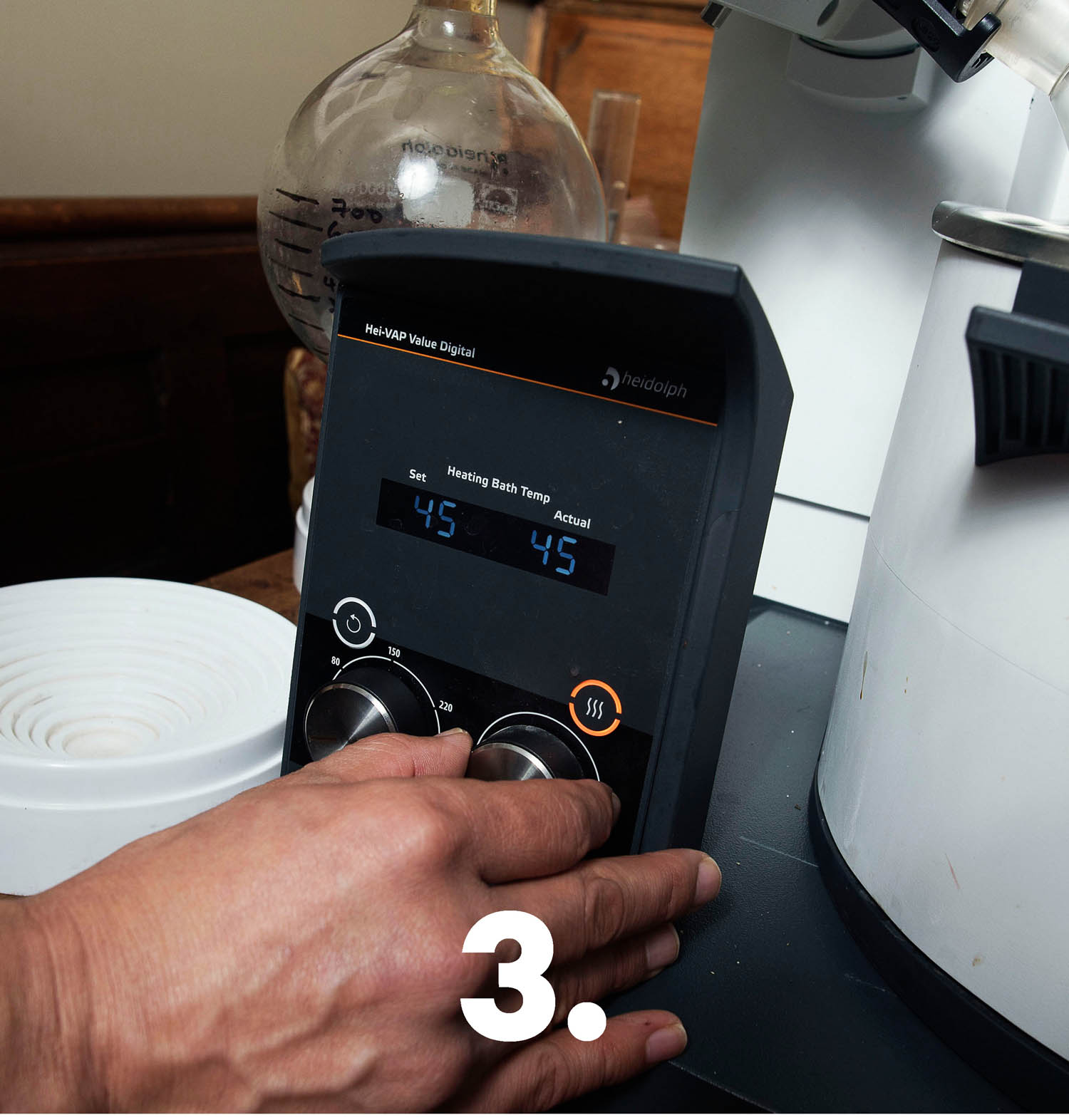
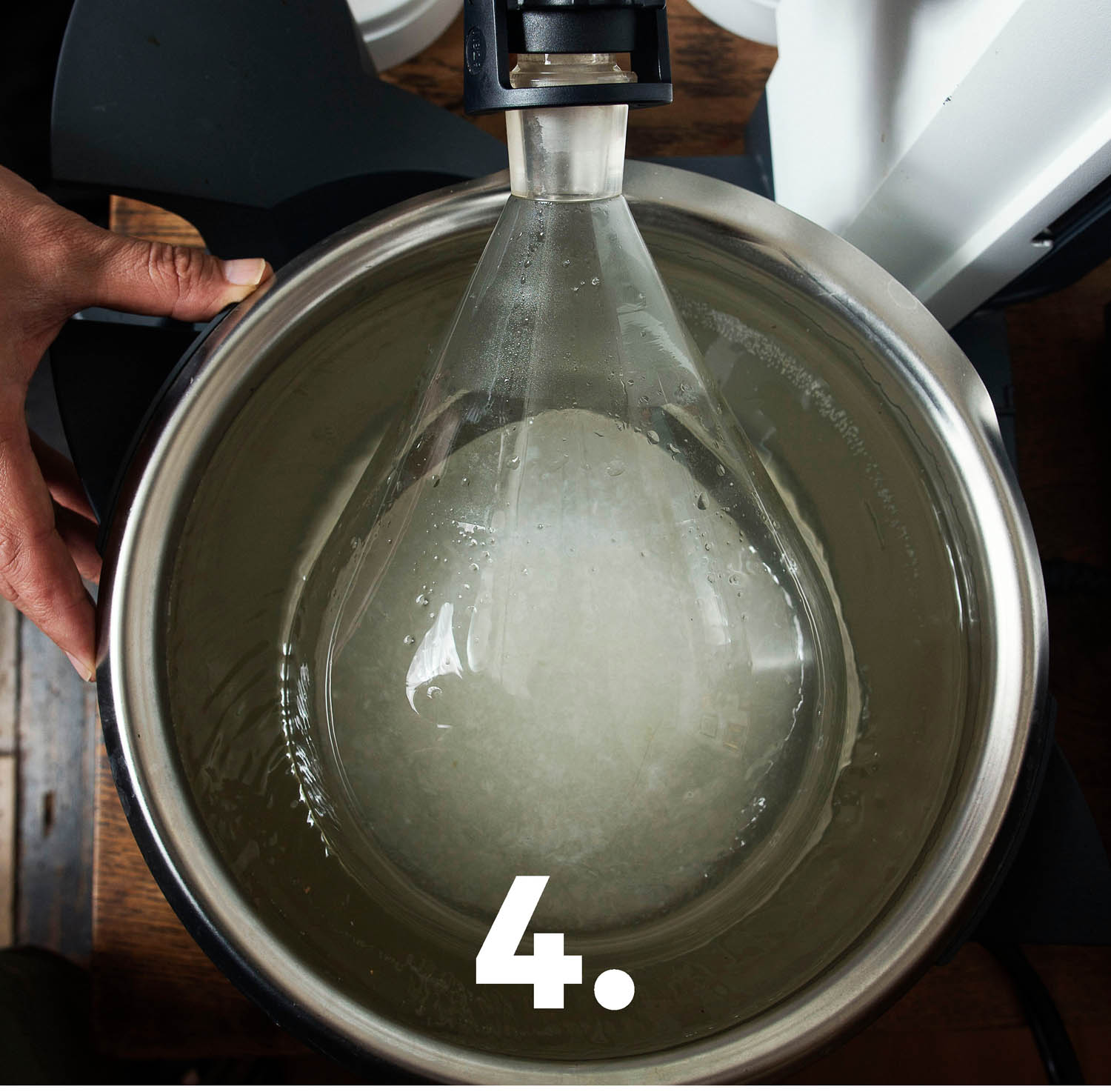
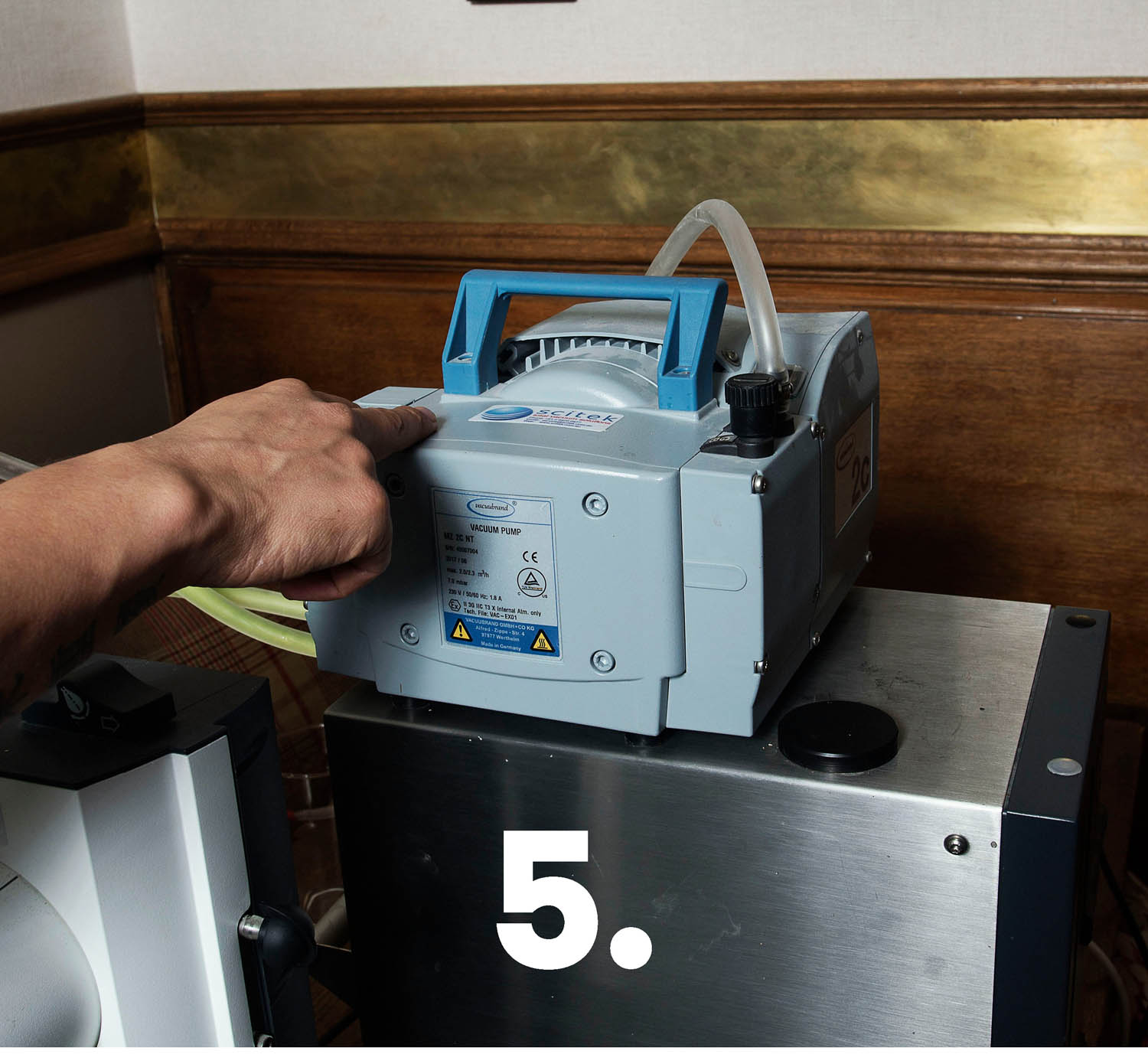
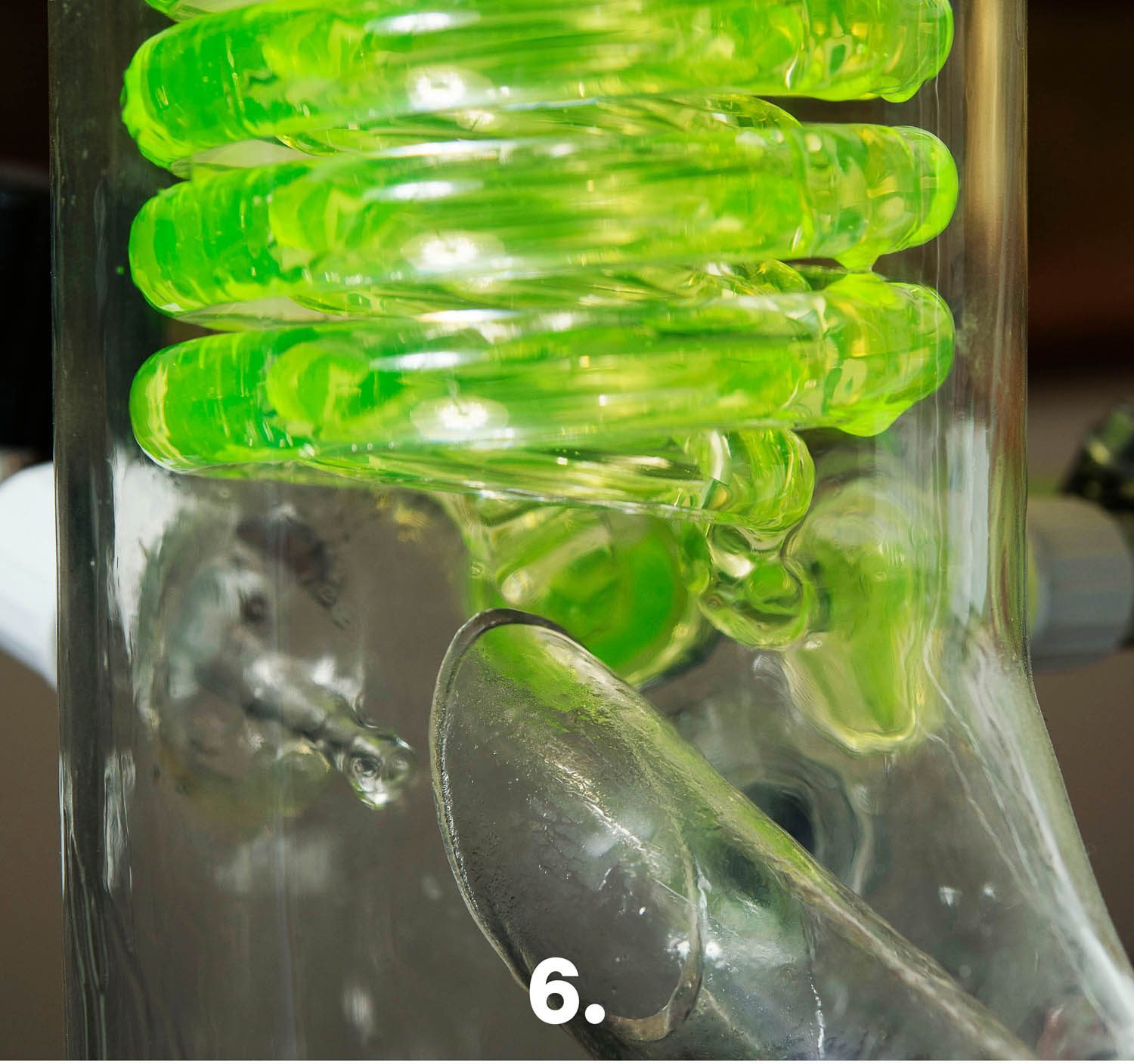
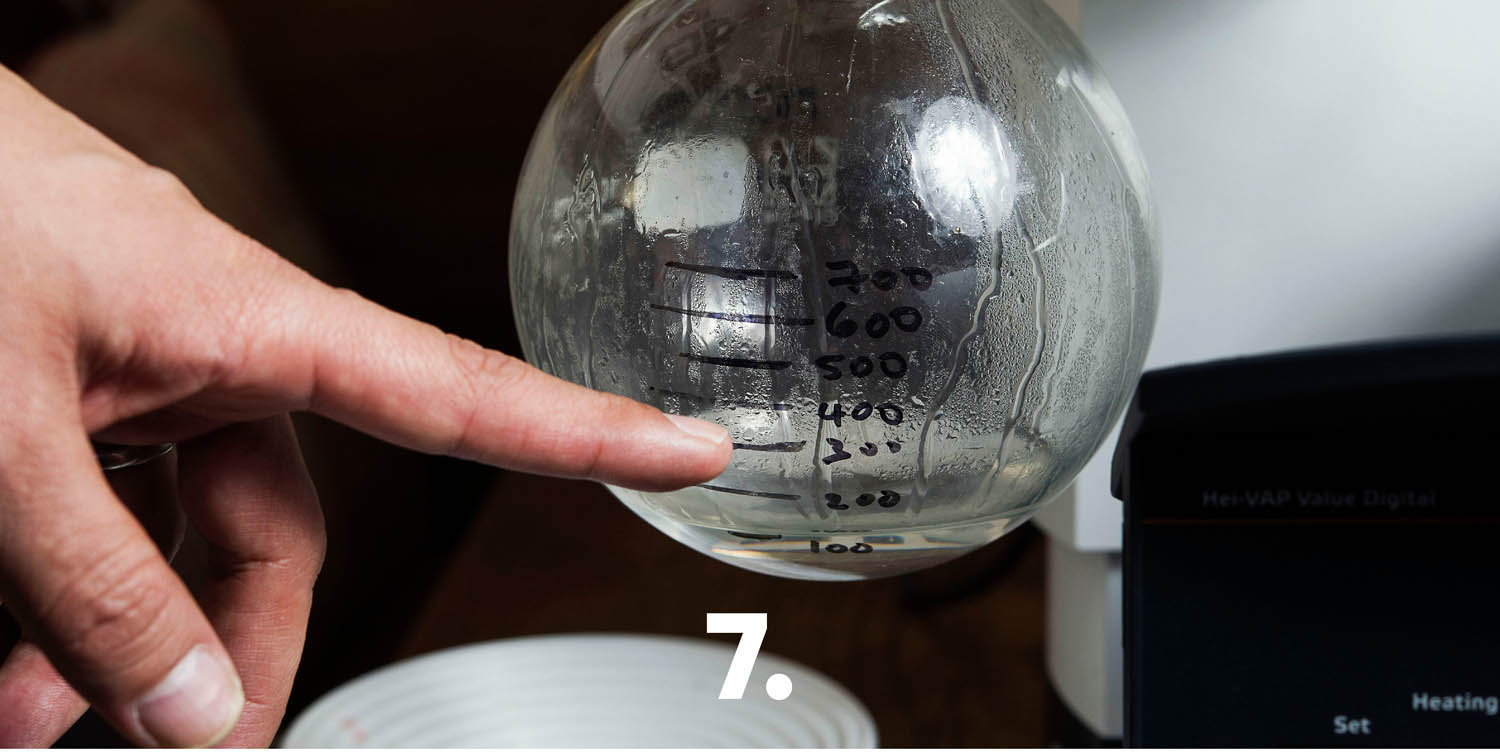
Photos by Christopher Pearce.

